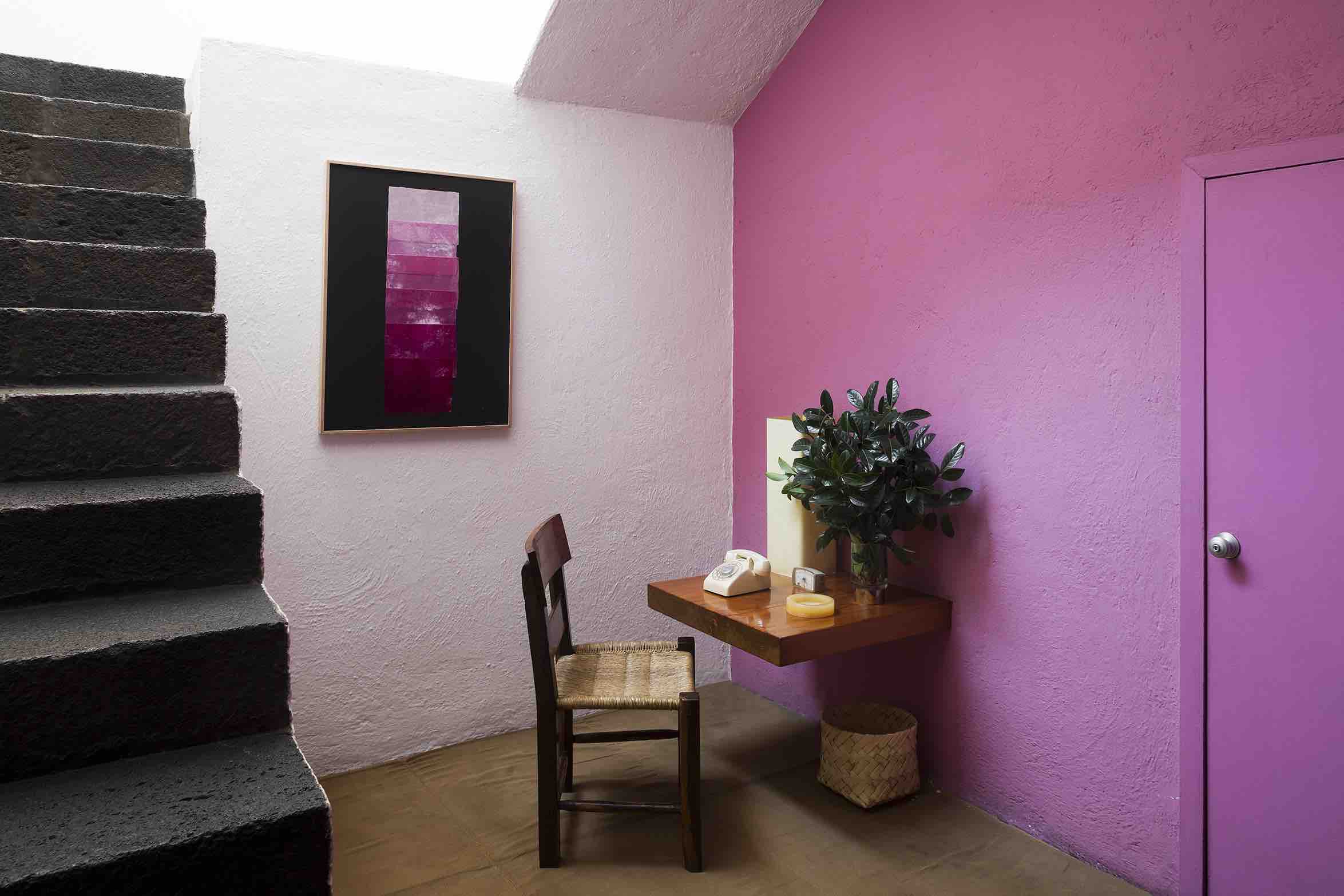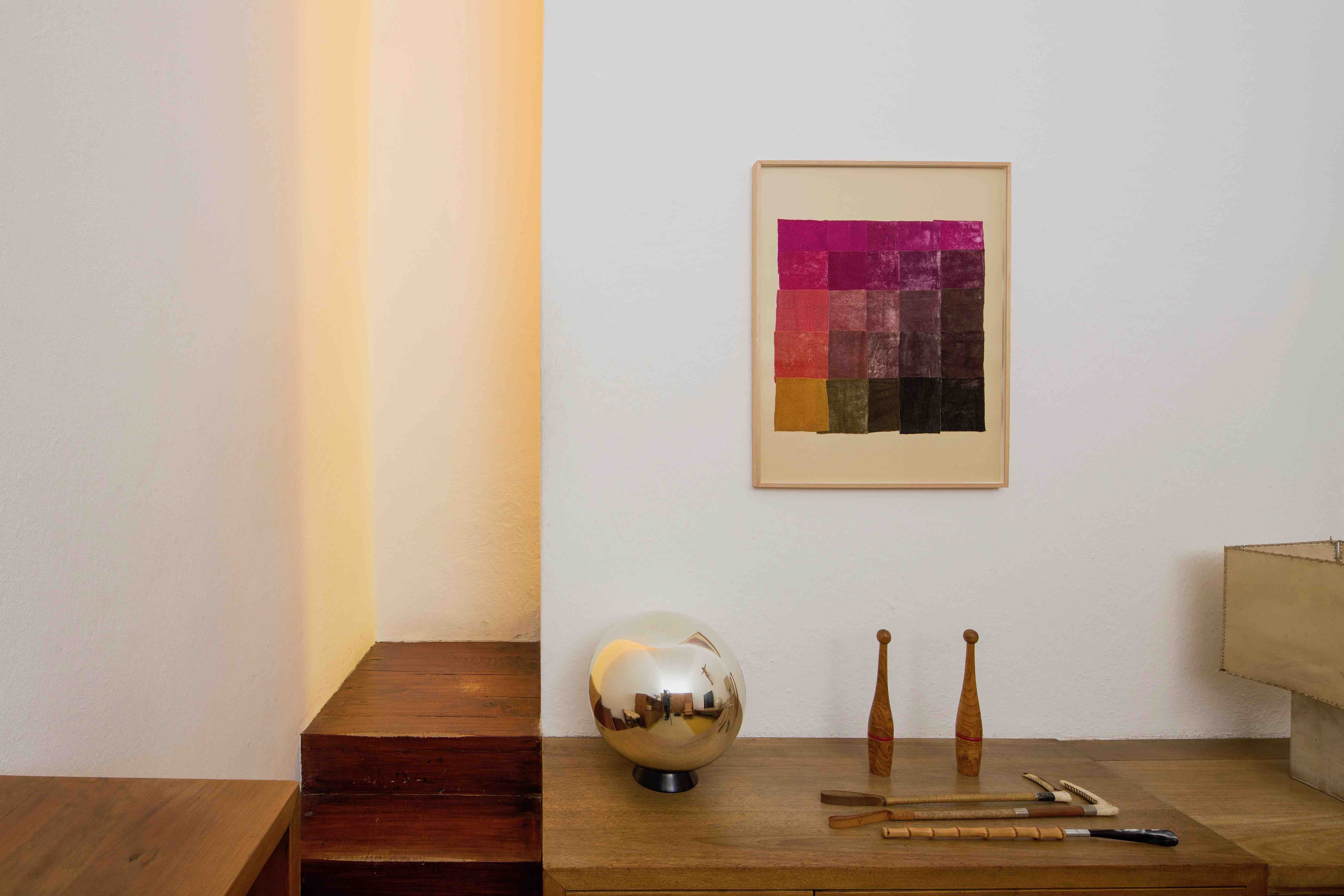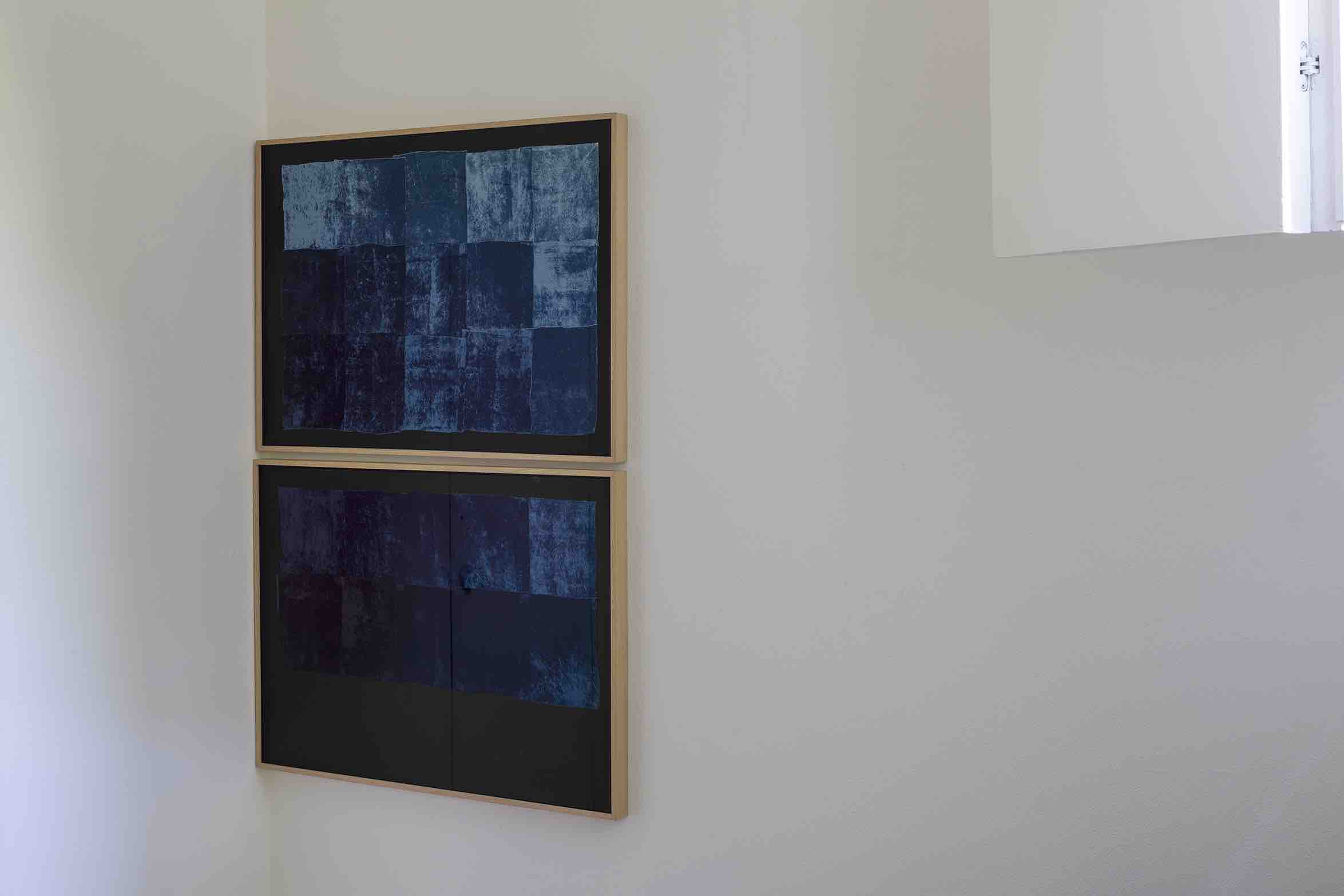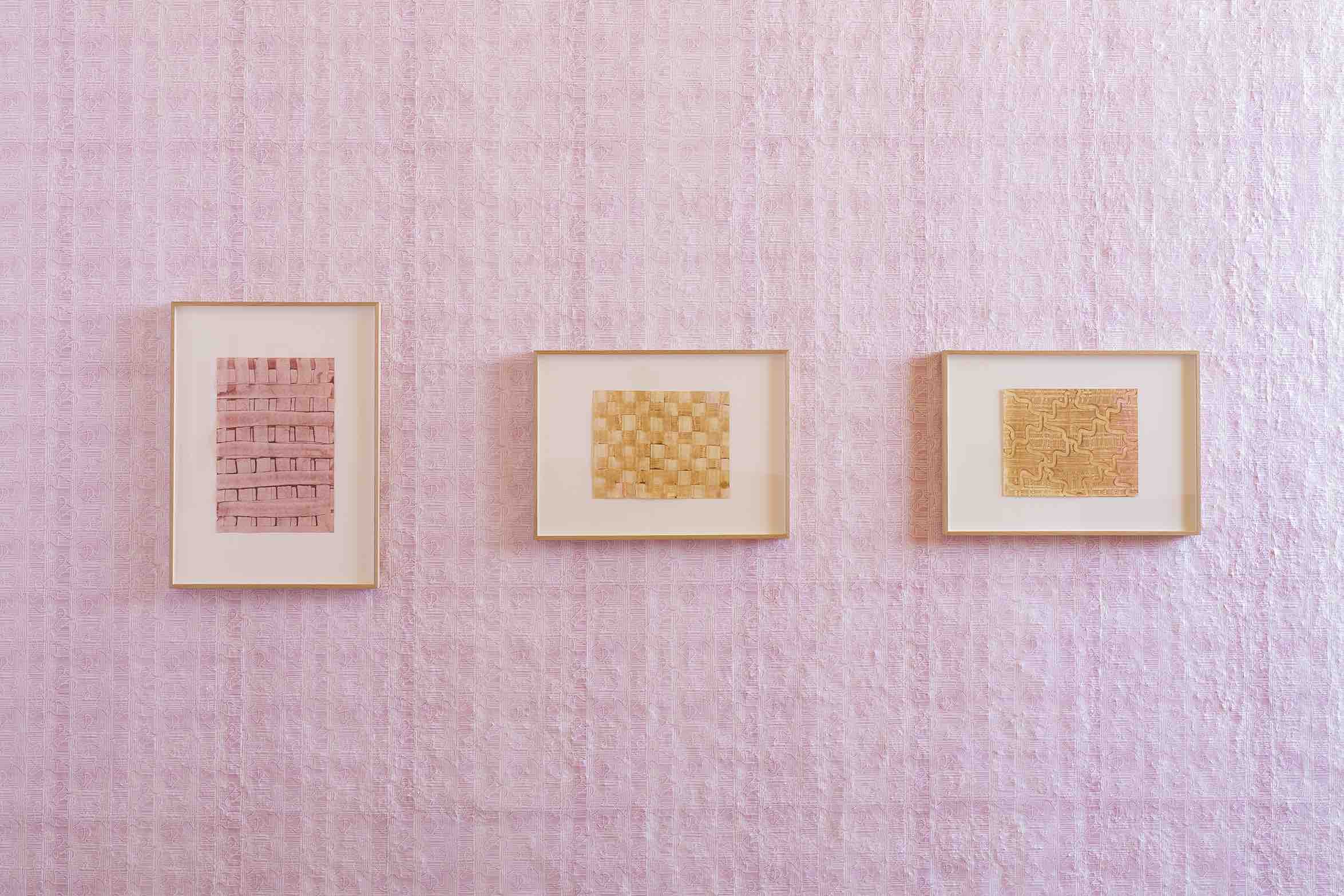
Essay
About Double Skin by Yto Barrada
by María Cristina Torres Valle Pons
At Casa Luis Barragán
Reading time
3 min
An invitation to intervene in the monument of a man’s intimacy, to introduce oneself to the second and third dermal layers with which he designed the domesticity of his habitat, and to establish contact between objects in a mutual asynchronous absence. The conversation of things contained in six spaces of the Barragán House.
The Hall
Step into the foot of a waterfall—magenta pink, stone black, thawing like daybreak—that empties out from a window as the day progresses.
In the center of the scene is the first display of silk, tinted in varieties of cochineal grana. After days of learning how to impregnate its softness with an echo, the textile is moved from its usual locations, towards the wall and inside a frame.
The library
Among the hundreds of books sheltered here, only some have a second skin. The reason why Barragán preferred this is unknown. With the new binding the original covers were replaced with paste paper, and the titles on the book spines were handwritten. This is the paper skin, prologue and epilogue in the most internal contact with the text, before its jump towards the walls of the studio.
Meanwhile, in the opposite side of the room:
A monochrome yellow square is the surface of encounter between the sunlight and the projected light. From here emerge transparent silhouettes and mutable discs, orbits and lines in a flickering loop. A painting, a film.
![Yto Barrada, Horsehair, Confetti and Rice [video], 2019, in “Double Skin”, installation view at Casa Luis Barragán, Mexico City, 2019. Courtesy of the artist, PACE, Steir-Semler Gallery, Galerie Polaris and Estancia FEMSA - Casa Luis Barragán. Photo: Ramiro Chaves.](https://firebasestorage.googleapis.com/v0/b/prod-ondamx-art.appspot.com/o/media%2F1566074392369-11.jpg?alt=media&token=62f13f8a-8276-4e9a-80f5-f22032667bc9)
The Dressing Room
A soft repertoire of fabrics between a mirror without edges and a crucifix without a cross, a synthesis of travels towards the colors of the Earth. Chromogeometric echoes delivered to the skin of the eyes, like a prism that gathers the angles emanating from a terrace that sticks out behind your back. Impressions of cochineal grana and Tyrian purple; signs of the Albers, of Rothko, of Goeritz. 

The Bedroom
The little bed of a tall man who sleeps through the diurnal night. By the headboard, silk and chestnut, silk in chestnut, chestnut silk—six times. In the nightstand, a golden Madonna. By the feet, the skin of a chestnut model—six times.
A picture within a picture within a picture within a picture.
The White Room
A corner receives the light of the window, as well as the blue that breathes from two glass bottles and a fabric. The vertex is a broad range of indigo in which differences are blurred as the sun moves and as one roams around.
Evanescent alliteration of a color barely revealed, it retracts. Where there had been glow, there is closed blue; where there had been shadow, a caress appears.

The Study
Three paste paper designs have changed place: from the customary interior of a book, to the walls of an architect’s workshop.
On the new wallpaper, nine gridded patterns roll down from a scale that opens like a zoom into the frames that keep them vertical.
The paper skin slides and climbs until it hugs the house that holds it.


Published on August 14 2019